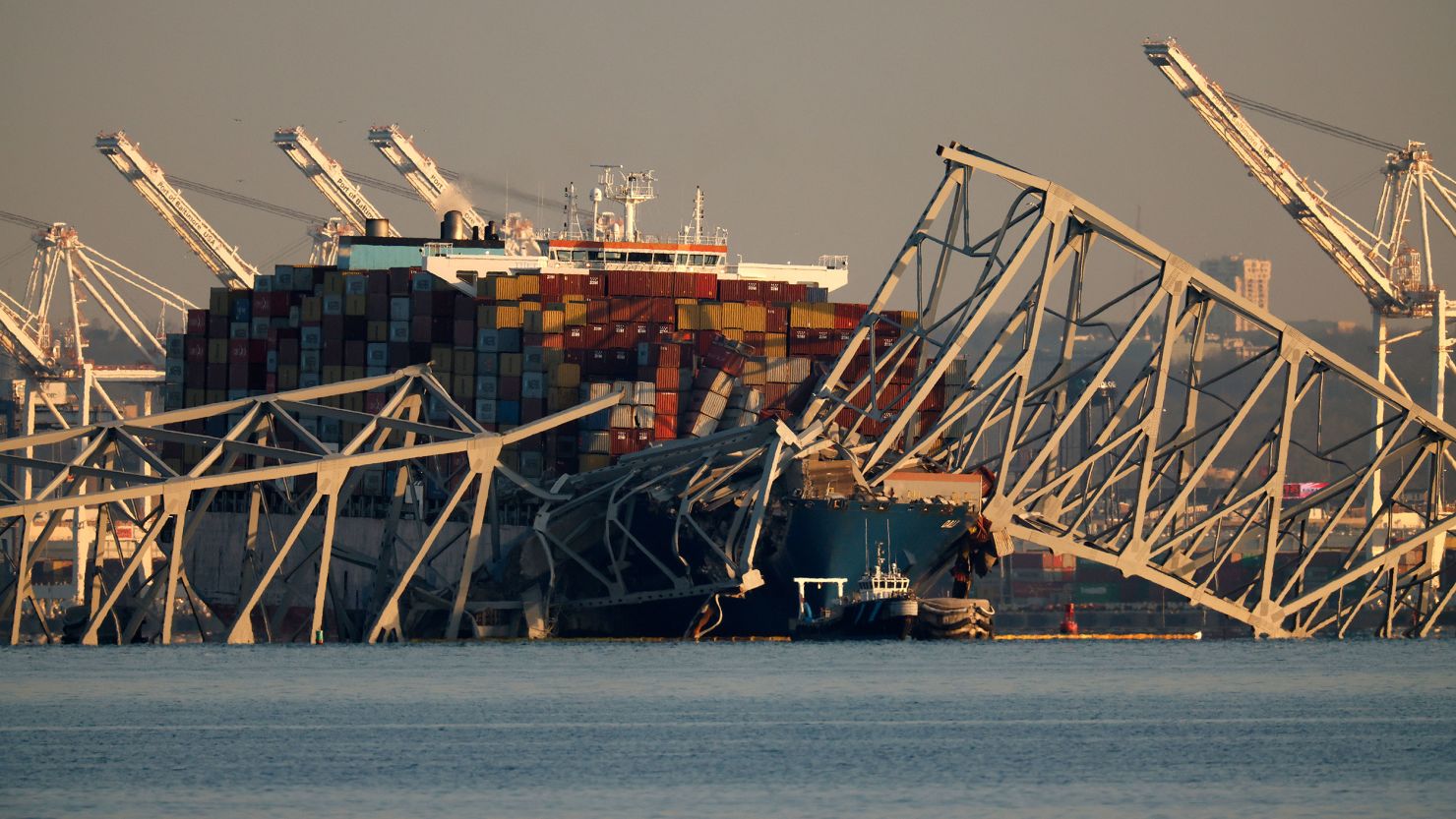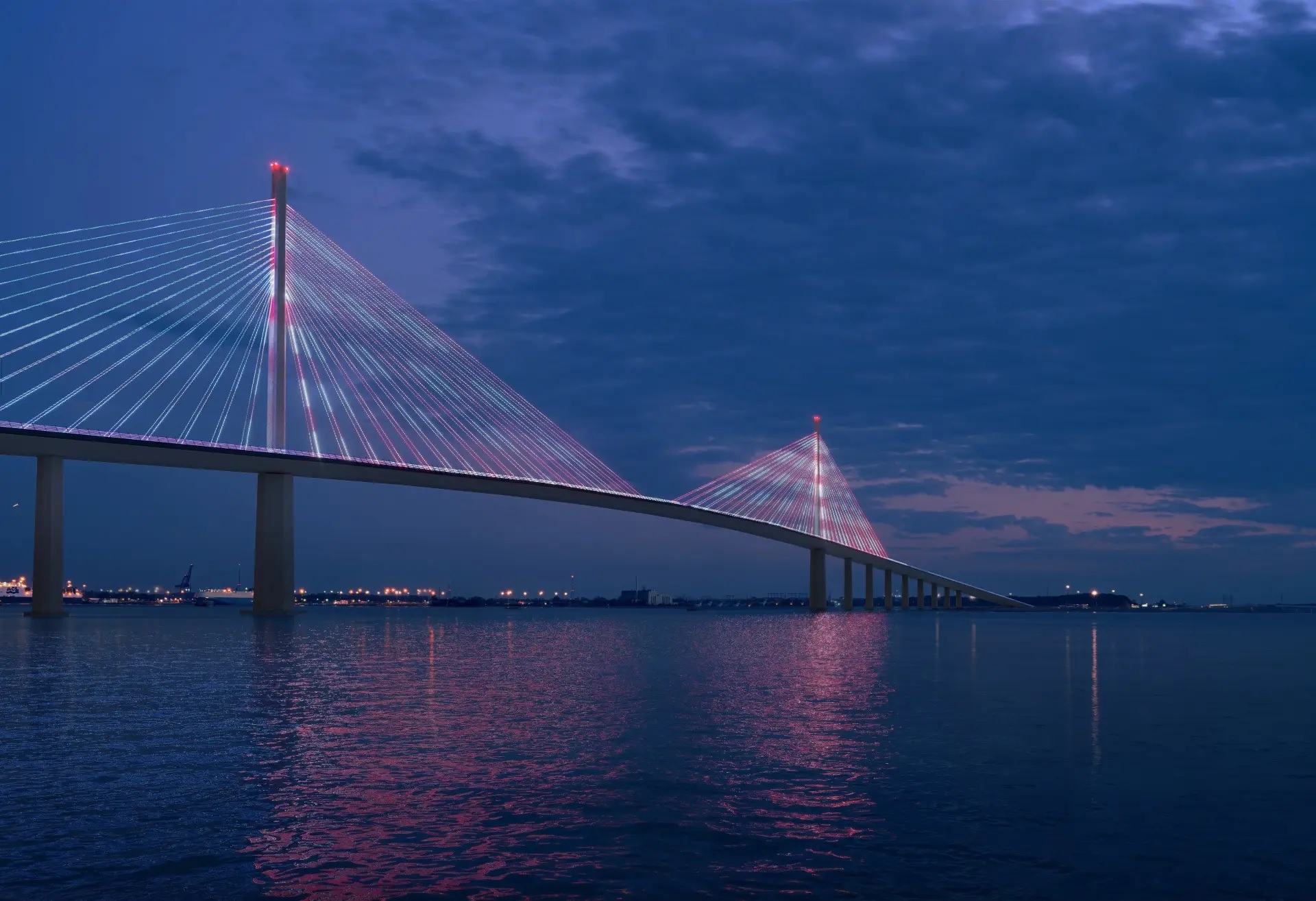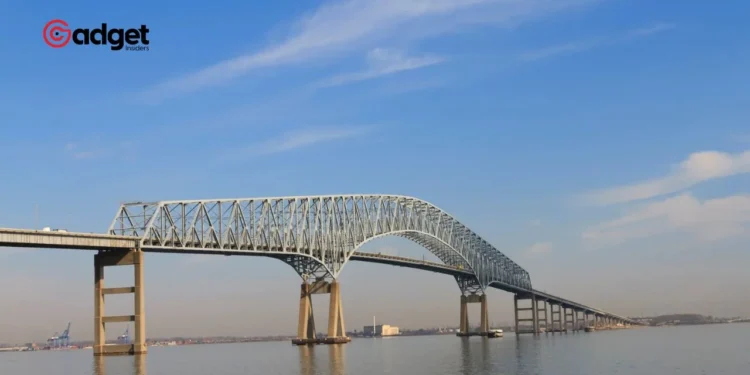In a shocking incident last March, the enormous container ship Dali struck the Francis Scott Key Bridge while losing power during its exit from Baltimore’s port. The collision caused significant structural damage, leading to the collapse of a critical section of the bridge. This event not only left the Dali trapped beneath the bridge’s remnants but also severely disrupted the flow of traffic to and from the Port of Baltimore, a vital artery for the region’s economy.

The aftermath of this event has been nothing short of dramatic, with recovery operations continuing to unfold as the city grapples with the logistical nightmares caused by the bridge’s absence.
The Financial and Human Cost of Reconstruction
Maryland’s Department of Transportation has been thrust into the spotlight, tasked with orchestrating the bridge’s replacement. A spokesperson from the department, David Broughton, shared insights into the projected costs and timeline: “We plan to build a new span by the fall of 2028, with estimated costs between $1.7 billion and $1.9 billion. These figures are preliminary, pending more detailed engineering specifics which are yet to be confirmed.”
Cal Maritime, a tiny California State University in Vallejo, boasts perhaps the world’s most realistic reconstruction of the Baltimore bridge collapse. I audited a recent simulation to get at what this reconstruction means for the maritime industry: https://t.co/EbNv6irwkY
— Connor Letourneau (@Con_Chron) May 5, 2024
Funding for the new bridge will primarily come from state and federal sources, reflecting the significant investment required to restore this crucial infrastructure. Additionally, the insurance company covering the river crossing has agreed to contribute $350 million towards the reconstruction efforts. This payment is anticipated to be the first of many compensatory steps in the wake of the disaster.

Legal Entanglements and Corporate Responsibility
The situation is further complicated by the actions of the Dali’s operators, who have invoked an ancient maritime law to cap their financial liabilities. This move has sparked a broader discussion about corporate responsibility and the mechanisms of accountability in maritime accidents.
The Human Tragedy Behind the Incident
Beyond the staggering financial figures and legal debates, the true cost of the collapse has been painfully human. The bridge disaster claimed the lives of six construction workers, with the recent recovery of another victim, Miguel Angel Luna Gonzalez, bringing the community’s grief back into acute focus. Gonzalez, along with his fellow workers, all Latino immigrants from Mexico, Guatemala, El Salvador, and Honduras, symbolize the often-overlooked human element in such large-scale infrastructural failures.
As recovery and planning efforts continue, the city mourns the loss of these individuals, reminding us that behind every engineering project and headline, there are personal stories and community impacts that resonate far beyond the immediate aftermath.

Baltimore’s Journey: Rebuilding the Francis Scott Key Bridge
With a projected completion date in 2028, Baltimore looks towards a future where not only is its physical landscape reshaped but also its approach to safety and corporate accountability in public infrastructure projects. The rebuilding of the Francis Scott Key Bridge represents a significant step in Baltimore’s journey towards recovery and resilience, promising a safer and more robust framework for the thousands who rely on this critical passage each day.
The road to 2028 will be paved with challenges, both foreseen and unforeseen, as the city, its residents, and its leaders navigate the complex interplay of recovery, reconstruction, and remembrance. As this chapter in Baltimore’s history unfolds, it will undoubtedly serve as a poignant reminder of the resilience and interconnectivity of urban life.









